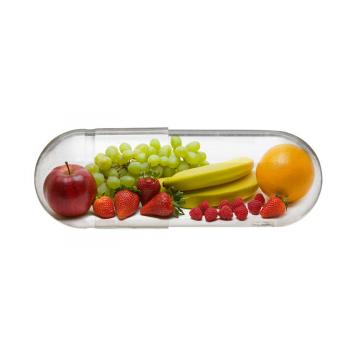A vitamin is an organic molecule (or a set of molecules contiguously amalgamated chemically, i.e. vitamers) that is an valuable micronutrient which an organism needs in small quantities for the proper involved of its metabolism. valuable nutrients cannot be synthesized in the organism, either at every or not in satisfactory quantities, and thus must be obtained through the diet. Vitamin C can be synthesized by some species but not by others; it is not a vitamin in the first instance but is in the second. The term vitamin does not enhance the three supplementary groups of necessary nutrients: minerals, vital fatty acids, and vital amino acids. Most vitamins are not single molecules, but groups of associated molecules called vitamers. For example, there are eight vitamers of vitamin E: four tocopherols and four tocotrienols. Some sources list fourteen vitamins, by including choline, but major health organizations list thirteen: vitamin A (as all-trans-retinol, all-trans-retinyl-esters, as competently as all-trans-beta-carotene and additional provitamin A carotenoids), vitamin B1 (thiamine), vitamin B2 (riboflavin), vitamin B3 (niacin), vitamin B5 (pantothenic acid), vitamin B6 (pyridoxine), vitamin B7 (biotin), vitamin B9 (folic bitter or folate), vitamin B12 (cobalamins), vitamin C (ascorbic acid), vitamin D (calciferols), vitamin E (tocopherols and tocotrienols), and vitamin K (phylloquinone and menaquinones).
Vitamins have diverse biochemical functions. Vitamin A acts as a regulator of cell and tissue bump and differentiation. Vitamin D provides a hormone-like function, flexible mineral metabolism for bones and additional organs. The B highbrow vitamins bill as enzyme cofactors (coenzymes) or the precursors for them. Vitamins C and E produce an effect as antioxidants. Both deficient and excess intake of a vitamin can potentially cause clinically significant illness, although excess intake of water-soluble vitamins is less likely to reach so.
Before 1935, the unaided source of vitamins was from food. If intake of vitamins was lacking, the consequences was vitamin nonexistence and consequent want diseases. Then, commercially produced tablets of yeast-extract vitamin B technical and semi-synthetic vitamin C became available.
This was followed in the 1950s by the deposit production and promotion of vitamin supplements, including multivitamins, to prevent vitamin deficiencies in the general population. Governments mandated addition of vitamins to staple foods such as flour or milk, referred to as food fortification, to prevent deficiencies. Recommendations for folic mordant supplementation during pregnancy condensed risk of infant neural tube defects.
The term vitamin is derived from the word vitamine, which was coined in 1912 by Polish biochemist Casimir Funk, who lonesome a obscure of micronutrients necessary to life, all of which he presumed to be amines. subsequent to this presumption was highly developed determined not to be true, the "e" was dropped from the name. all vitamins were discovered (identified) in the midst of 1913 and 1948.
Airborne Vitamin C Immune System Support Very Berry 20 Tablets FREE SHIPPING! D4 eBay
Vitamin D4. Dihydrotachysterolum. Stock Vector - Illustration of research, concept: 87395113
KK Breakthrough Vitamin D (4 Bottles) Keto Kerri






No comments:
Post a Comment